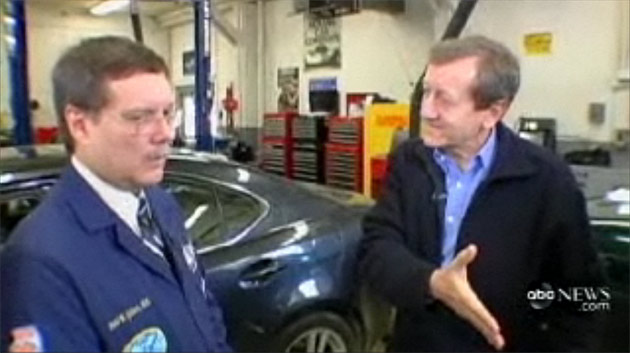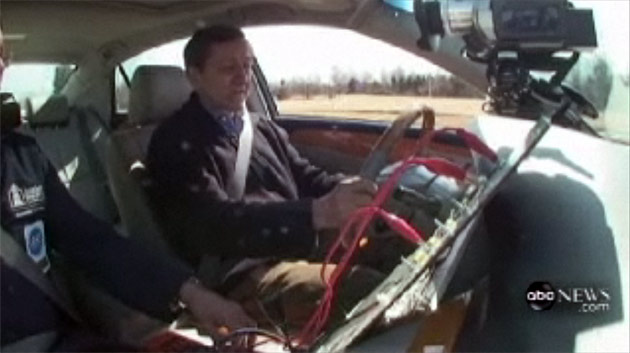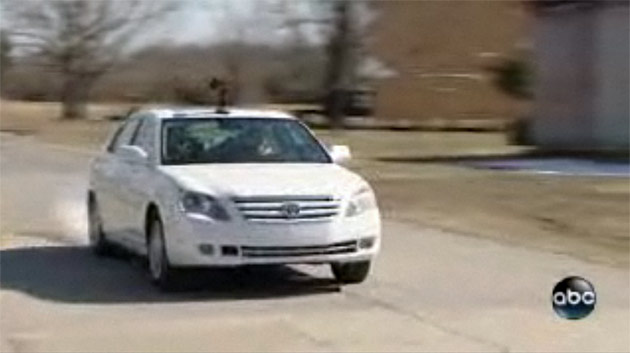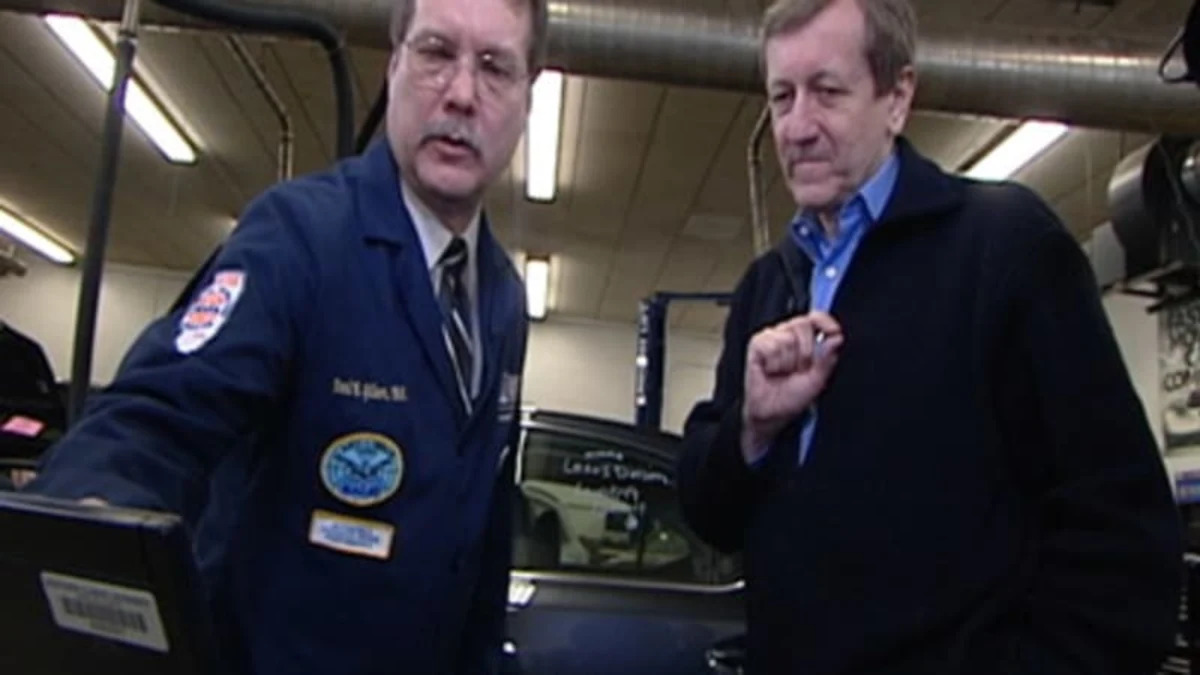You may have noticed that there have been a large number of reports recently about Toyota and the continuing series of recalls it has announced in recent weeks. Here at Autoblog we try to be fair and tell the story as best we can without being inflammatory. Unfortunately, the same can not be said of all media outlets. ABC News, and reporter Brian Ross in particular, have been particularly vigorous in pursuit of a story – not the story.
Let's make one thing clear. Autoblog is not a cheerleading section for Toyota, or for trial lawyers, TV presenters or politicians with nothing better to do. We'd like to present the information to our readers without unnecessarily frightening anyone.
We also want to avoid the sort of debacle that happened with CBS and the Audi 5000 in the '80s and NBC with the General Motors side-saddle gas tanks in the '90s. In each of those cases, tests were setup to "simulate" the purported problem, but the tests did not exactly simulate real world conditions and showed unrealistic scenarios.
A recent report from Ross on ABC News featured an "automotive expert" named David W. Gilbert from Southern Illinois University attempting to demonstrate an electronic glitch in a Toyota Avalon. Let's discuss this report in more detail after the jump.

Tired of Toyota recall news? Try out the recall-free version of Autoblog.
It's too early to say whether the unintended acceleration demonstrated in the report is representative of anything that can actually happen in the real world. Here on the web we can use as much space as we need to tell a story. On TV, air time is scarce and stories have to be edited down to meet time constraints. The result is that a lot detail about exactly how tests are conceived and conducted are left out of the final edit.
In this particular instance, Mr. Gilbert demonstrated that he could independently command the throttle of the Avalon to go wide open regardless of the driver's input. Based on the report, two normally independent throttle pedal sensors were shorted together.
The video meant to be presented here is no longer available. Sorry for the inconvenience.
Let's start with some basic electrical background for those not familiar with such things. Electrical signals occur when electrons flow through a conductor such as a copper or aluminum wire. Conductors are wrapped in a plastic insulator, which prevents electricity from flowing to other conductive components with which the wire might come in contact. In a vehicle with an electronic control system, sensors provide inputs that are used to manage that system. These sensors typically have some sort of variable resistance based on whatever is being measured. That resistance affects the voltage flowing from the sensor to the control unit. If the insulator becomes worn, a short circuit can occur that bypasses the normal resistance causing the signal to go either much higher or lower than normal.
The control software that manages engines, transmissions, brakes and even power windows and seats in modern cars contains diagnostic algorithms. These diagnostic routines are used to try and detect anomalies in these signals and set a fault detection code and/or put the vehicle into a fail-safe mode.
There are a seemingly infinite number of things that could go wrong in any such system. Engineers spend a lot of time doing fault analysis to proactively determine what can problems occur. Part of the analysis involves rating the severity and likelihood of these problems happening. This analysis is used to determine what diagnostics need to be included in the system.

While it's certainly possible that a control system could be set up to try and detect everything that could possibly go wrong, there are good reasons to limit what the system looks for. If a fault has a high severity but zero likelihood of actually happening outside the realm of theory there's no point in including diagnostics to look for it.
All of these diagnostics are coded in software and anyone who uses a computer knows that software can have bugs. No matter how much something has been tested, bugs still slip through and automotive control systems are no different. If a piece of code doesn't do anything useful, it is better to leave it out than risk introducing a bug needlessly.
Useless code takes time to develop and requires memory space in a control unit, all of which adds to cost. With so many things in a car actually in need of space and attention, judgments have to be made about what is actually necessary. It's possible that Toyota decided that the type of short circuit demonstrated by Mr. Gilbert is not something that could actually happen in the real world.

Not knowing enough about either Gilbert's test procedure or the Toyota hardware in question, we cannot say with any certainty if the demonstration was realistic. Given Brian Ross' lack of engineering background, we doubt even more that he could say with any authority either.
Having said that, it is possible that some of Toyota's judgments could have been wrong. Without sitting down and pouring over Toyota's fault analysis documents and hardware, making any such declaration would be nothing more than speculation. We also don't know whether this is a fault Toyota meant to detect. That would be impossible to say for sure without examining the source code.
Coming back to Mr. Gilbert's testing, it's clear that he was able to make the car accelerate irrespective of the driver's wishes. It may well be indicative of either a hardware or software defect introduced by Toyota. Does this prove a defect? Not at all.
It may be nothing more than proof that Gilbert was able to create a fault condition that could never happen without human intervention. To imply otherwise is unethical on the part of both ABC and Mr. Gilbert. ABC has a vested interest in pumping up this story to boost its ratings. (Full disclosure: Autoblog is also dependent on advertising revenue to keep the servers running and the bloggers caffeinated.) Similarly Mr. Gilbert is being paid for his investigation by consulting firm Safety Research & Strategies of Rehoboth, Mass. That firm is under contract to at least five law firms currently involved in litigation against Toyota.

In a statement issued by Toyota on February 23, 2010, the day after the ABC report and the day Gilbert was to testify before a congressional hearing, the automaker revealed its recent correspondence with Gilbert. Gilbert first approached the company on February 16 with a different scenario about how acceleration could be triggered. Toyota explained that this scenario would in fact trigger a fault. Gilbert then came up with a different test, which was used in the video demonstration.
We are not accusing Mr. Gilbert or Safety Research & Strategies of any wrongdoing, nor are we trying to exonerate Toyota. Gilbert may in fact be right, although there is no conclusive evidence to support that at this time. It's also very possible that, in spite of Toyota's claims that there is no software problem contributing to unintended/sudden acceleration, exactly the opposite is true.
We recommend to our readers that they take all such claims from either side with a great deal of skepticism. This story is far from over, and it is not clear at this point what the outcome will be.


Sign in to post
Please sign in to leave a comment.
Continue